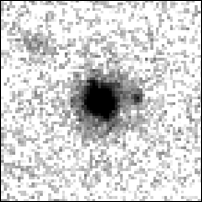

The peoples of the Chihuahuan Desert undoubtedly have gazed skyward ever since they first arrived, and just as undoubtedly recognized that some stars—the wanderers—were different than others, the fixed stars. Early desert dwellers probably recognized five of these planets: Mercury, Venus, Mars, Jupiter, and Saturn, with no realization that Earth and its moon were in anyway similar.
Since those days, we've greatly increased the sun's entourage.
We added Uranus, Neptune, Pluto, and loads of asteroids in the last century, and
recently another planet far beyond Pluto. Things haven't stopped at that, though. A
plethora of moons has been revealed. Instead of Earth's one and Mars' two, we
have something like 143 encircling the planets beyond Mars, even including one around
the newly discovered trans-Pluto planet. And Pluto itself, subject recently to attempts
to downgrade it from planet status, now is thought to have three instead of the lonely
one discovered in 1978. From a handful of heavenly bodies in a sky a few miles away to
knowledge of over 200 planets circling other stars—truly a different universe!

Listen to the Audio (mp3 format) as recorded by KTEP, Public Radio for the Southwest.
Contributor: Arthur H. Harris, Laboratory for Environmental Biology, Centennial Museum, University of Texas at El Paso.
Desert Diary is a joint production of the Centennial Museum and KTEP National Public Radio at the University of Texas at El Paso.

The 10th planet and it's moon (the small dot to the right of the larger). In this negative image, bright objects show as dark and vice versa. Image courtesy of the W. M. Keck Observatory.